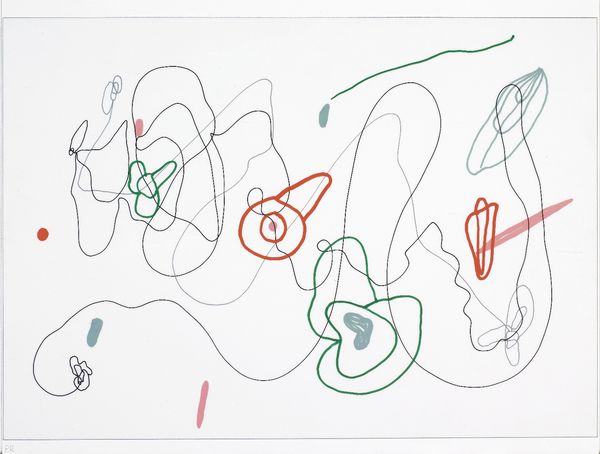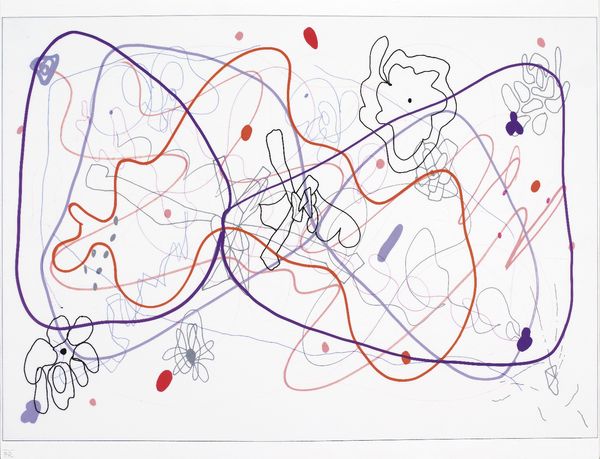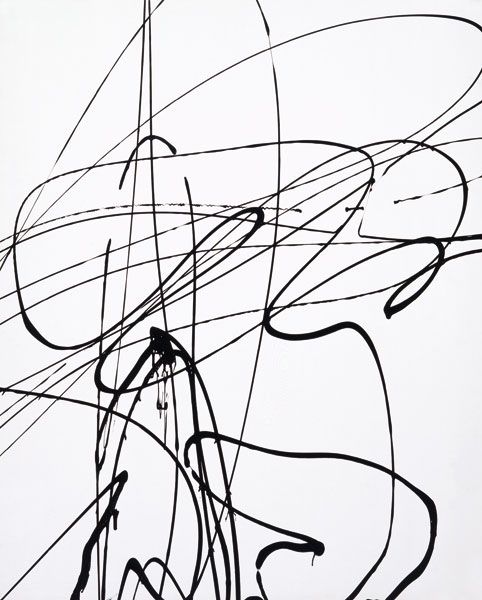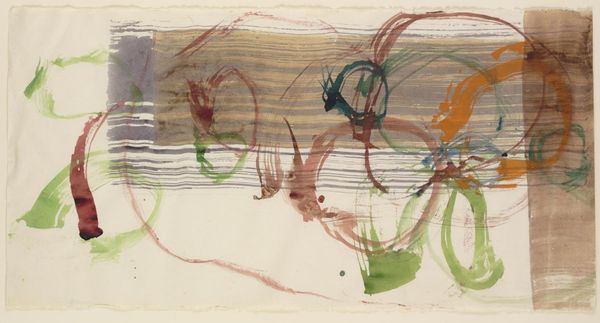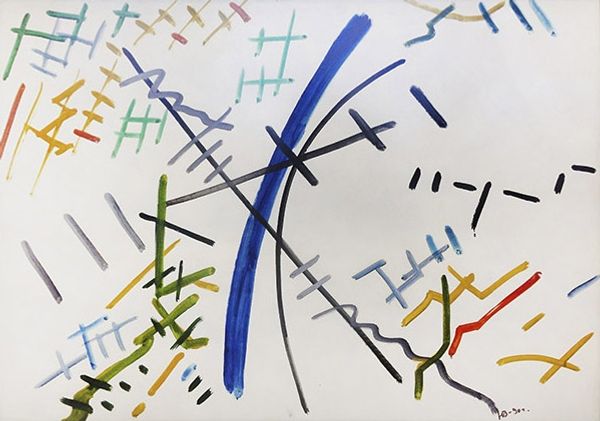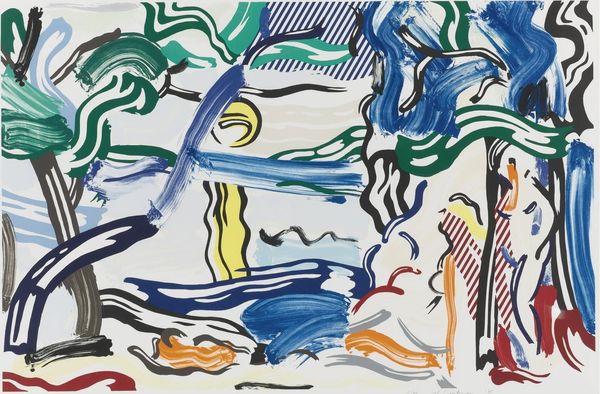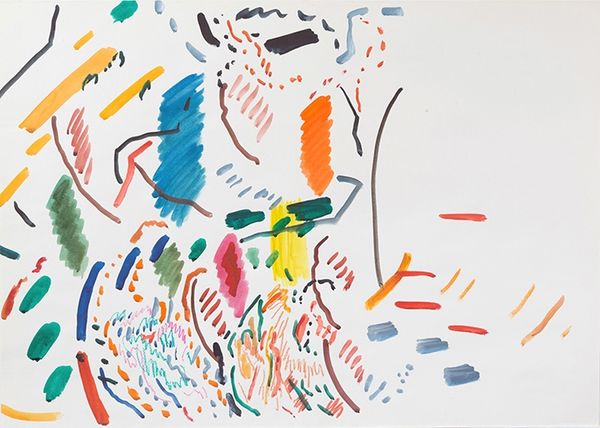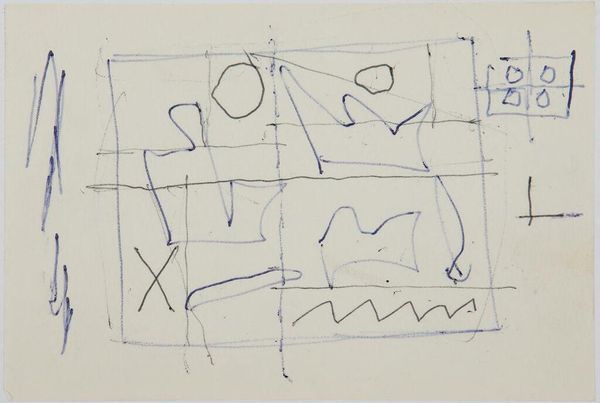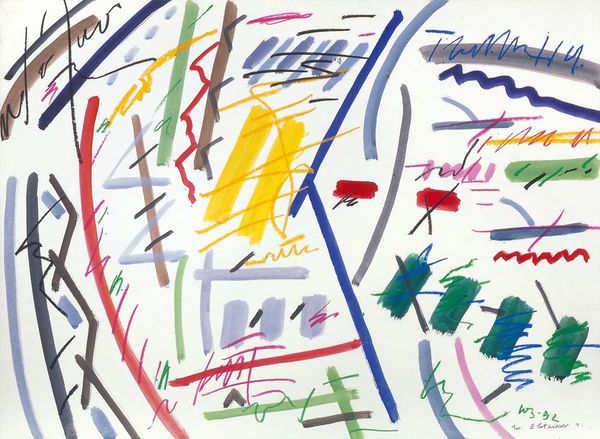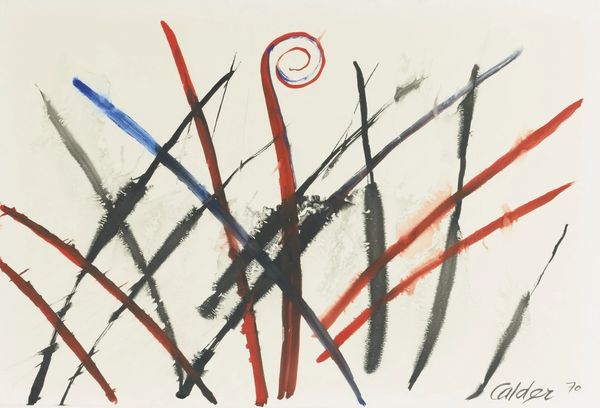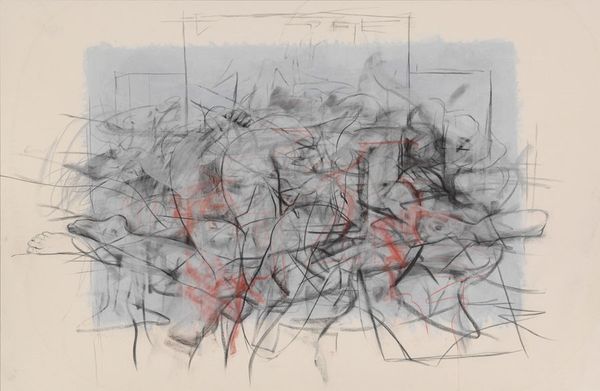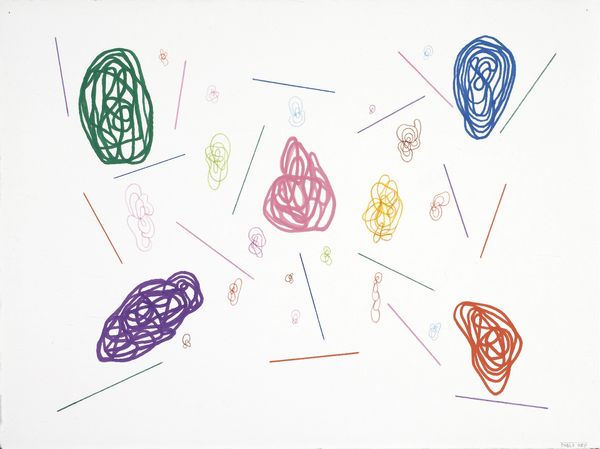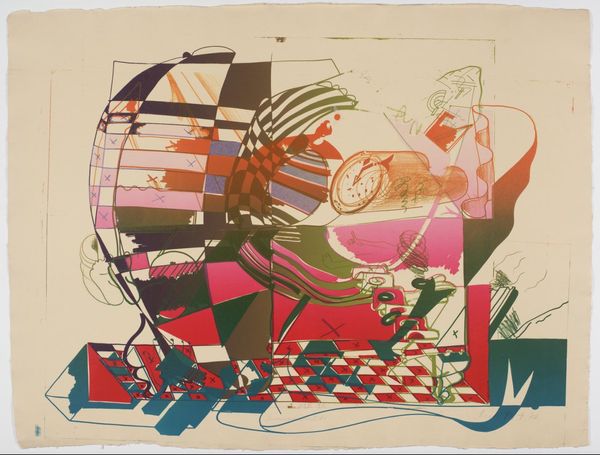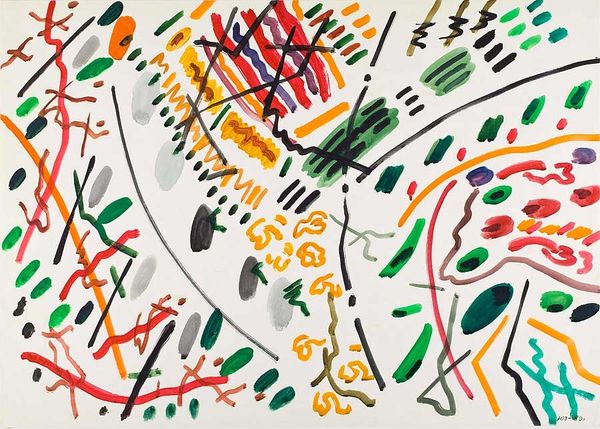
graphic-art, mixed-media
#
graphic-art
#
mixed-media
#
geometric
#
abstraction
#
line
#
modernism
Dimensions: 23 x 30 cm
Copyright: Creative Commons NonCommercial
Curator: Pablo Rey’s “Espacio Combinado #1,” created in 2002, blends graphic art techniques with mixed media elements. It's a vibrant, abstract piece that immediately draws the eye. Editor: It feels almost like a child's drawing, in a sophisticated way. The colors are gentle, and the composition seems playful yet intentional. It makes me think of whimsical design and simple geometry. Curator: Absolutely. Rey is working with the languages of modernism. His line work and limited color palette show he's thinking about abstraction as a dialogue between the planned and the spontaneous. The question is, what informs this approach? What materials, tools, and techniques does Rey engage with? Editor: And I would wonder about the cultural climate in which he made this, how that might speak to notions of freedom, whether politically or socially. Its lightness hints at that sort of context. The very title, "Combined Space," suggests the coming together of previously separate ideas. What were Rey's motivations for that integration? Curator: I see that integration reflected in the texture of the line itself. There's something clearly mechanically reproduced happening alongside something that feels quite immediate and personal, sketched by hand. That tension must relate to its broader social moment and artistic labor, wouldn't you say? The commercial and the conceptual are brought into dynamic conversation through his deliberate engagement with mark-making and simple design. Editor: Perhaps the simplicity challenges our expectations. There's something disarming about it. We are pushed to reconsider how complex ideas can be represented. Are there historical precedents to it? Does he connect this to similar approaches by others who used this simplified line language in Latin America and beyond? Curator: This sort of art exists, in part, as a response to increasingly commercial image-making practices. Think about Pop Art, for example, and how it elevates those materials and processes into art. But here, there seems to be more interest in revealing, not obscuring, the methods and context behind it. Editor: Yes, uncovering hidden histories seems crucial to understanding its role. Looking closer, the longer I stand before it, the more charged with symbolic meaning I imagine its abstract figures might be. I am starting to think it’s less whimsical and much more weighted. Curator: It truly invites the viewer to consider the social implications of these visual forms and the labor embedded in it. Thanks for these contextualizations. Editor: Thank you. Considering context makes me appreciate the possible intentionality behind his minimalist choice of elements.
Comments
No comments
Be the first to comment and join the conversation on the ultimate creative platform.
